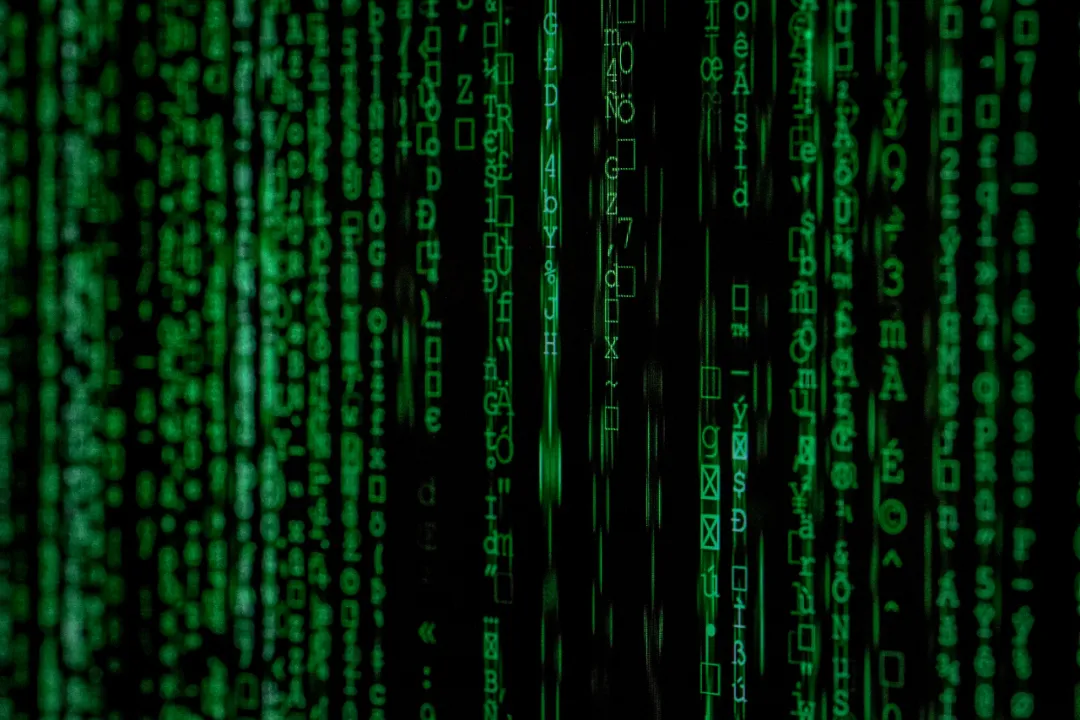DePin looks very “technically”, it is actually a very simple logic.
In Web3, DePin quickly became one of the most viewed tracks. What is exactly? What is its relationship with ordinary people? How wonderful is the potential for future development? The following content is assembled from the PodCast Defiant interview with Amira Valliani, the head of DePin at Solana. If you want to know if DePin is an opportunity you should pay attention to and how to implement it, this content should not be missed.
Q: Can you present yourself for a short period and how did you enter the encryption and joined the Solana Foundation?
Amira Valiani (referred to below in the name of A): I started attention for the first time to coding in 2017. However, I was mainly interested in the news platforms that were built, especially local news. I have always wondered: Can Blockchain be used to build societal infrastructure, such as soft services such as writing news, which can be shared and profitable?
Later, she turned into entrepreneurship and developed a paid podcast platform. Although it has nothing to do with encryption, it has made me so hard that it difficult for the content of the content to receive small subscription fees. I have never forgotten the concept of “building a common society.” After selling the company in 2021, I began to think seriously to return to the world of encryption.
She worked in politics in Washington, DC, and also worked in the White House and the Ministry of Foreign Affairs. I felt this was an opportunity to combine my multiple interests. After joining the Solana Foundation, I was initially responsible for politics, and then later participated in strategic projects. I joined the Board of Directors of the Helium Foundation, and of course took responsibility for the work of the institution related to the DePin.
Q: I just mentioned political issues. Solana is also very active in policy making. Can you tell us more of what you do in Washington?
A: Our first priority is actually “education”. After all, political makers do not understand Blockchain, and we need to help them understand the impact of this technology on the real world, especially how to help voters.
For example, we invited helium developers to Congress in the early days to provide how to build a common wireless network between society through Blockchain. Many members of Congress originally had a misunderstanding about encryption, but when they saw that the project came its fruits and heard with their ears that “someone in your electoral district uses the helium network”, they started taking this technology seriously.
Q: Your current basic job is Deeb. Can you explain in simple phrases what DePin is and why is it very important?
A: Depin means “decentralized physical infrastructure networks”. Simply put, it uses the incentive method for Web3 to convert “fragmented resources” in the hands of everyone into a service that can be filled and used by others.
For example, we all use navigation applications every day, but update the MAP data is very slow and expensive. There is a project called HIVEMAPPER, which is a decentralized map project. You just need to install Dashcam to collect map data automatically along the way when you move to get rid of work every day, and the system will reward you with symbols. This real map data is updated faster than Google, and has wider coverage and cheaper.
Another example is the helium project. You can use your WiFi domain width to spread hot points and contribute to the helium network. Others can connect to the Internet through it, and you can earn icons. Some large telecommunications companies such as AT & T and T-Mobile cooperate with them to use the helium network to cover areas that are not easy to enter.
Basically, DePin solves the problem of “wide cooperation”. In the past, only giant companies can spend billions of dollars to build this infrastructure. Now, web3 makes it possible for everyone to participate.
Q: Are all material resources suitable for DePin? Why did not some techniques follow the traditional supply chain?
A: A good question. First of all, I don’t think follow the supply chain is considered DePin. The DePin key is whether there is a market with both supply and demand: one of the two parties is people who can collect data, such as those who suffer from a frequency range, equipment, or resources on the site; The other party is the companies that need this data.
If you put an element case on the chain, this is more like a B2B tracking tool, not DePin. DePin tends to integrate distributed resources and convert data into widely traded services. Therefore, information such as MAP data, width of Wi -Fi, and edge computing power that can often be needed and updated dynamic is particularly suitable for DePin.
Q: Depin and AI have a strong relationship. Can you speak in detail on how to combine the two?
A: I think artificial intelligence is one of the main forces that I am more optimistic about DePin. Most of us are now exposed to Amnesty International, but only open ChatGPT or confused to chat with some sentences, and the level of artificial intelligence application remains on the computer. I think that in the next ten years, artificial intelligence will enter the reality and become part of our lives. For example: automatic driving, delivery robots, overwhelming robots, etc.
So what do this AIS “on Earth” need? The answer is – the real world data. For example, self -driving cars need to know if there is drilling in the future, whether the road signs have been changed, and whether there are any constructions in the streets. This type of data is simply not enough for Google to drive some cars to wipe them every year.
This is the place where Deepin comes. Let’s take HIVEMAPPER as an example. It is a decentralized map project. Users only need to install Dashcam to collect data while daily driving and share it for symbolic rewards. The data is much faster than Google and can cover remote areas – for Amnesty International, it is just a data paradise.
Another example is Matrix Rover, which pushes a high -resolution camera on the street to take very clear pictures of the automatic driving system. This data is more detailed than traditional “street scenes” and is of great value for Amnesty International.
Q: Is this data destined for large companies? Can the DEPIN data be served?
A: It is true that most AIS is controlled by major companies, such as Openai, Google and Meta. But in the past two years, AI’s decentralized projects began to appear in the encryption field, with the aim of building the Amnesty International network that major companies overlook. Here, the real world data provided by DePin is particularly important.
Another thing to be added is that not only data, but also a huge amount of GPU computing power is also needed to train artificial intelligence. However, the expensive graphics processing units and the normal teams can afford their costs. At the same time, there are countless units of inactive graphics processing distributed in personal computers, business stations and laboratories worldwide … If these graphics processing units can be connected through the DePin network, then a civil version of the UNICI Group will be Amnesty International. Many projects do so, such as IO.NET, Akash, Render, etc., all of which are building decentralized GPU networks so that small teams can also train artificial intelligence. The idea behind this is the liberation of the two main elements of artificial intelligence, data and computing power, from central monopoly.
Q: Is it difficult to promote these things in reality? For example, will you hinder the current high interest rates, the difficulty of financing, and the complex policies DePin?
A: What I mentioned exactly is why the time for DePin. Traditional infrastructure, such as building a telecom tower, may cost millions of dollars, and you have to pass through procedures, attract investment, and obtain approval. But funding is now costly, and many projects cannot be promoted at all.
The special thing in DePin is that it does not depend on investment from one large institution, but it breaks the project into small pieces, allowing countless individual users to participate in construction, such as spreading a hot point or installing a sensor. As long as you take a few hundred yuan, the system will reward you with symbols, and it will become a network facility.
So DePin is mainly divided from high objects into something that everyone can participate in. This is in fact a good solution to the current total environment with high interest rates and high costs.
Q: I said that DePin will be a trillion dollars in the future. How can such an explosive growth achieve?
A: At the present time, DePin may be equal to only several billion dollars, but it is developing very quickly. I think the future explosion point will come from three directions:
More tools: In the past, if you want to develop the DePin project, you had to build the system from scratch and spread the chain yourself. Now, both Solana service providers, chart platforms, and data inquiries, which greatly reduces the development threshold.
Amnesty International Data: The rapid development of AI makes data in the real world very important, and DePin is the best data collection network. The more artificial intelligence develops, the most popular DePin will be.
More and more entrepreneurs “knowing” the market: Many DePin founders have now worked on devices, infrastructure and really understanding industry. They are not the type of people who “collect money first and then find a solution”, but they really use Crypto to solve old problems. They first see pain points and then choose to solve them using the Web3 method. So I say that the DePin explosion key is that a large number of “practical” founders entered Web3. They know how to accomplish things, and this is the essence.
Q: Is it possible for an ordinary person like me to earn a living by participating in the DePin project?
A: Of course. I met a man in Mexico, whose function is full of HIVEMAPPER. He bought a group of Dashcams himself, then found a group of online taxi drivers and truck drivers, installing equipment for them, and helped him to operate the maps every day. He is responsible for the back management, profit distributions, and equipment maintenance, and this has become a “Personal Map Company”. There are also people who specialize in operating and maintaining hot dots of shellium, spreading networks, maintaining the contract, and disposing of regional factors, etc.
These are all completely new job opportunities. You do not need to know how to write the code. As long as you can use the equipment and manage resources, you can participate in the web3 network and start earning money.
conclusion
DePin looks very “technically”, but in reality it is a very simple logic: destroying the resources we communicate with every day in the real world into parts, then use incentive mechanisms to make people participate actively. It allows us to see that everyone will have the opportunity to participate in building artificial intelligence in the future. If you miss the first days of Bitcoin and Ethereum, this may be your opportunity to enter.
Author Coinspire
This article reflects the views of the pillar writer in Panews and does not represent Panews’s position. Panews does not bear legal responsibility. The article and opinions do not constitute an investment advice.
Photo





